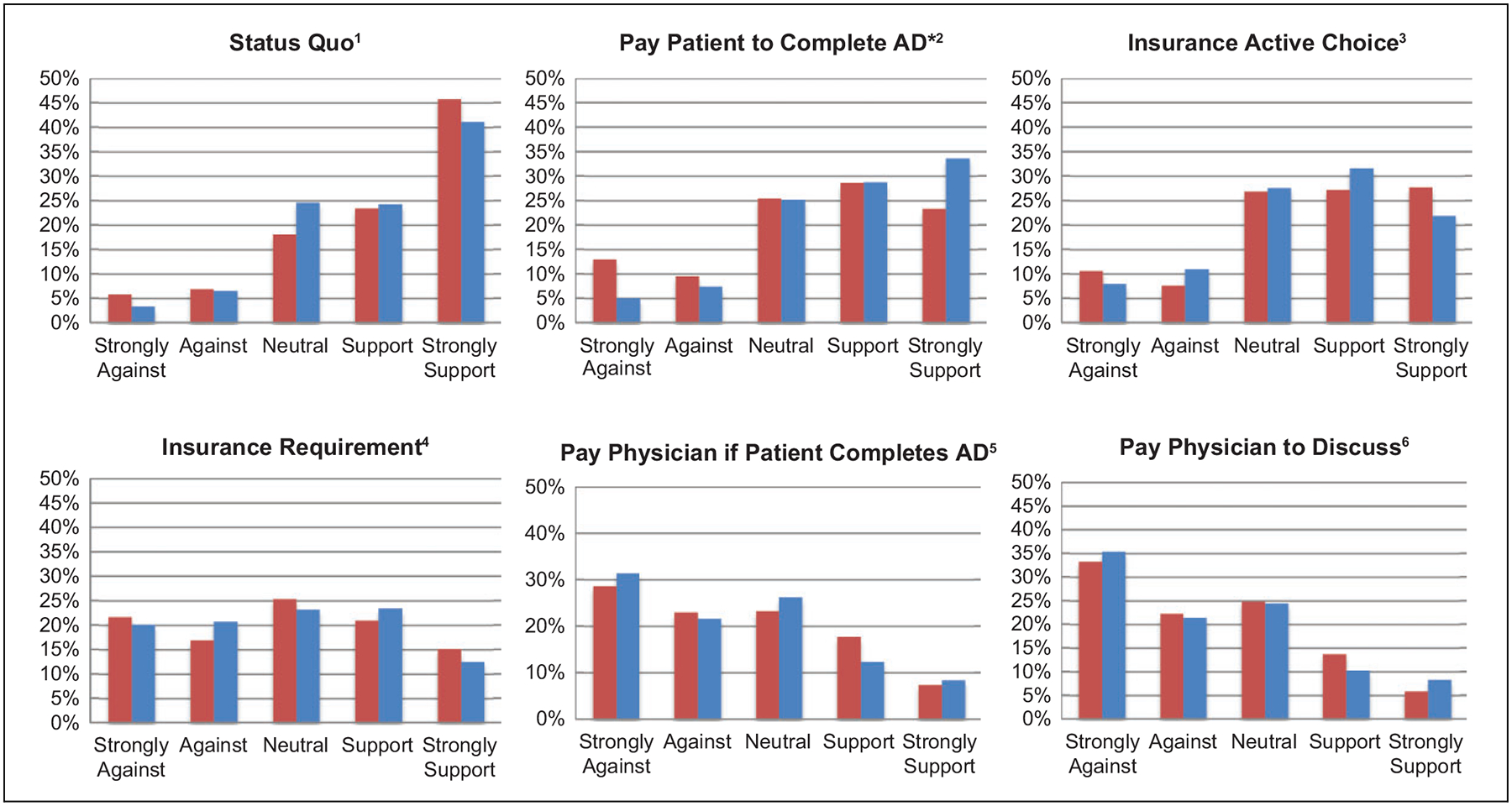Figure 1.

Programs, definitions, and percentage of participants that support each. AD indicates advance directive. Asterisk denotes significant differences between the in-person and online samples (P =.002). Graphs are ordered from most to least overall support across all participants, where support is defined as support or strongly support. 1 Status quo: Patients may complete ADs whenever they choose with no systematic incentive or guidance. 2 Completion-based incentive for patients: Patients are financially compensated for completing an AD. 3 Forced active choice: As a condition of health insurance converage, patients must complete either an AD or a declination form indicating they do not wish to complete an AD. 4 Insurance requirement: Patients must complete an AD in order to receive health insurance coverage. 5 Completion-based incentive for physicians: Physicians are financially compensated when his or her patients complete ADs. 6 Process-based incentive for physicians: Physicians are financially compensated for documenting discussions of AD completion with patients
